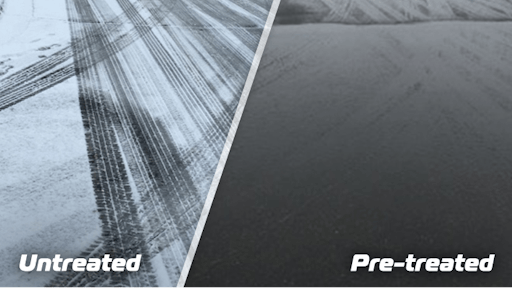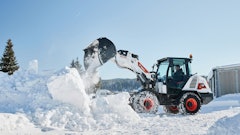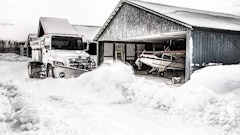
Taking the plunge into the use of liquids while facing the challenge of dealing with snow and ice opens the door for innovative contractors to position themselves on the leading edge of the snowfighting business.
I’ve learned quickly in my introduction to the industry that use of liquids is not meant to replace plowing or spreading salt, but when used in conjunction with those other two types of services, they can significantly increase the overall sustainability of operations.
Through some schooling by Douglas Dynamics sustainability manager Pam Buckley, I’ve found that use of the liquids can lead to more efficiencies including reduction in overhead costs and labor by pursuing a more preventative approach.
The liquid applications are primarily used by going out before a storm even starts and laying down a protective barrier to make sure that the snow and ice never bonds to the pavement.
Buckley equates the practice to the use of frying pans. Those who utilize the nonstick or treated pans (pavement) and cook with them find cleaning them is relatively simple. Conversely, if an untreated pan (driveway, parking lot) is used, the cleaning process becomes an exercise of scrubbing endlessly and potentially damaging the surface of the pan.
It seems one of the things holding some contractors back from utilizing an anti-icing program is the idea that salt is cheaper.
Let me share something I’ve learned in my first month: Salt itself does not melt anything. It is the salt brine that does the work. Any contractors that use salt regularly, technically are already using liquids. Moving to a liquid-based anti-icing program would just make that liquid use more intentional.
In an industry where slips and falls can be a serious issue, looking at preventative use of liquids is a way to provide a much safer surface until you can get there to clear it off.




























